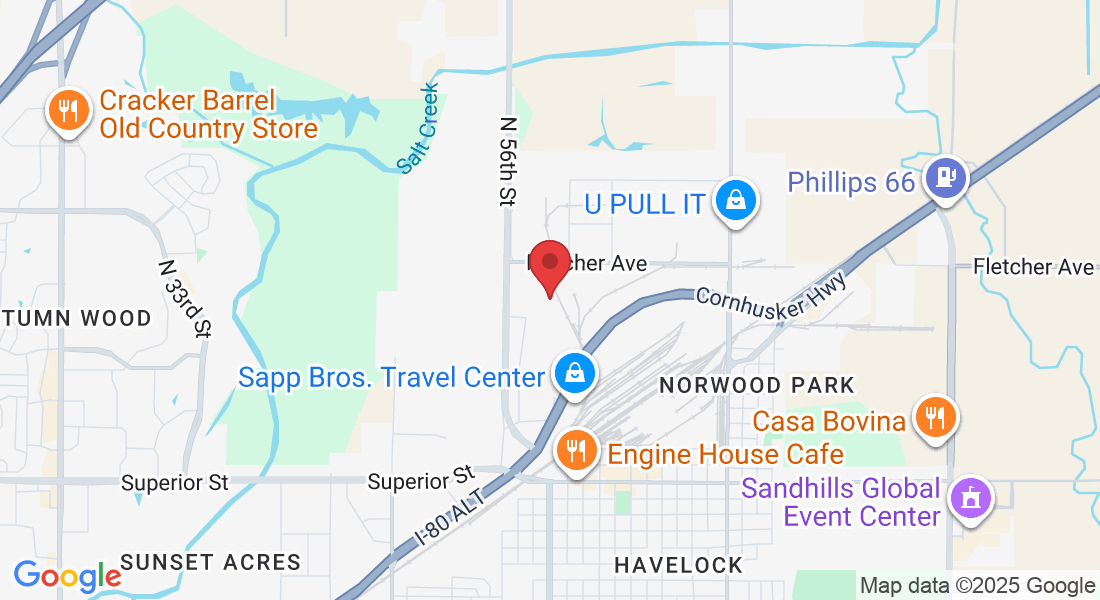Ceramic & Porcelain Tile Installation
Connect with a flooring expert at Underfoot Flooring today to explore professional tile installation services in Omaha, Lincoln, and Sioux Falls.
What to Expect from Ceramic & Porcelain Tile Installation
When choosing the right flooring material, it’s essential to consider the function of the space. Different rooms may require different types of flooring to meet their specific needs. Tile is a popular choice for kitchens, bathrooms, and other high-traffic areas due to its durability and ease of maintenance. Tiles can be made from various types of stone, including marble, travertine, and slate, but most fall under the categories of ceramic or porcelain. Once you’ve selected your tiles, the next step is professional installation.
Ceramic tile installation is typically divided into four key stages:
Planning
Preparation
Spreading Adhesive & Laying Tiles
Grouting
1. Planning and Preparing the Space
The first step in the installation process is evaluating the existing flooring. If the current subfloor is made of plywood, this is relatively straightforward. However, you may need to remove the base trim and particleboard, replacing it with plywood if necessary. Tools like a Skil saw can assist in removing the existing materials.
Once the particleboard is replaced, ensure the floor is securely attached to the floor joists, and it's time to prepare the subfloor. A leveling compound may be required to smooth out any imperfections.
You’ll also need to measure the room and calculate the number of tiles needed, allowing for approximately 15% extra to account for cuts and waste. If not already decided, this is the time to choose your tile size and layout pattern.
Finally, it’s essential to ensure the subfloor is smooth. Use a leveling compound to fill in any dips or uneven surfaces to ensure a flawless tile installation.
2. Setting Up the Space
Once the space is prepared, the next step is to mark the center point of the room. This can be done by measuring from opposite walls and finding the midpoint. Before laying tiles, it’s helpful to do a dry run, laying the tiles along a chalk line to ensure proper alignment. In some cases, you may need to drill holes for pipes or fixtures such as radiators or bathroom plumbing.
With your tiles laid out and measurements confirmed, the next step is to apply adhesive.
3. Spreading Adhesive and Laying Tiles
Spreading adhesive is one of the most critical steps in tile installation, as it ensures a strong bond between the tiles and the subfloor. Before you begin, prepare the adhesive according to the manufacturer’s guidelines. For ceramic or porcelain tiles, thin-set mortar is usually the best option, while natural stone tiles may require a different adhesive.
Be sure to clean the floor thoroughly before applying adhesive, removing any debris or dust that could interfere with the bond. After the adhesive is prepared, use a notched trowel to spread it evenly across the floor.
To maintain consistent spacing between the tiles, use tile spacers. These small, plastic devices ensure uniform grout lines and proper alignment. Create reference lines with chalk to guide your tile placement and ensure a straight installation.
As you lay the tiles, press them down firmly into the adhesive, being careful not to slide them, as this can disturb the adhesive beneath. If you need to make cuts for tiles along edges or around fixtures, use a tile cutter or snap cutter for clean, precise cuts.
4. Grouting
Grouting fills the spaces between tiles, providing a smooth, even surface and preventing dirt from accumulating. When choosing the width of the grout lines, consider the size of the tiles. Larger tiles may require wider grout joints to allow for natural expansion and contraction.
For corners and edges, cutting tiles at a 45-degree angle creates a clean, professional finish. Use a tile cutter or snap cutter to make these angled cuts.
Once the tiles are in place, use a grout float to spread grout over the tile surface, working it into the gaps. Be sure to remove excess grout promptly to avoid residue on the tiles.
After grouting, allow the adhesive and grout to cure fully, following the manufacturer’s recommendations for drying times to ensure a long-lasting and durable tile installation.
Quality Installation Guarantee
Your new flooring is an investment in your home, and we guarantee that it will be installed to meet the highest industry standards.
Tile Flooring Installation in Omaha, Lincoln, and Sioux Falls
At Underfoot Flooring, we make shopping for flooring easy! Take advantage of our free estimates and consultations today.
Our impressive buying power allows us to offer the most competitive prices on flooring in Omaha, Lincoln, and Sioux Falls. Let us handle the details, including removing your old flooring and expertly installing your new tiles.
Contact us today to learn more about tile flooring installation costs and how you can save on professional installation in Omaha, Lincoln, and Sioux Falls. We look forward to working with you!
FAQS (under construction)
How can I maintain and prolong the life of my flooring?
Proper maintenance is essential to extend the life of your flooring. For hardwood and laminate, regularly sweep or vacuum to remove dirt and debris. Use a damp mop for cleaning but avoid excessive water, which can damage wood. For carpet, vacuum frequently and consider professional deep cleaning periodically. Avoid dragging heavy furniture and use protective pads. Also, place rugs in high-traffic areas to minimize wear. Finally, follow the manufacturer's care guidelines for your specific flooring type to ensure longevity.
Where do i begin with a flooring project?
Starting your flooring project with Underfoot is simple and straightforward. First, explore our curated collections from top flooring vendors to find the materials that best suit your space and style. Then, schedule a sample room appointment to see and feel the options in person—if a sample isn’t currently available in our showroom, we’ll make sure it’s brought in for you. Once you’ve selected your flooring, our team can provide a detailed consultation, discuss project timelines, and handle everything from measurement to professional installation. For commercial projects, we also welcome bid requests and can work closely with developers and contractors to ensure a seamless process from start to finish.
How do i choose a product that is right for me?
Choosing the right flooring for your space is an important decision, and at Underfoot, we make the process simple and personalized. Start by considering the function of the room, the level of foot traffic, and your desired style and aesthetic. Our knowledgeable team is here to guide you through the options, from durable commercial-grade materials to elegant residential choices like hardwood, LVP, tile, and carpet. We encourage you to visit our sample room to see and feel the textures and finishes firsthand—if a sample isn’t available, we’ll bring it in for you. With expert advice and hands-on experience, Underfoot ensures you select a flooring product that not only complements your space but also meets your practical needs and long-term expectations.
What to do to prepare for a install?
Preparing for your flooring installation is easy with guidance from Underfoot. Your estimator will provide you with a pre-installation checklist and tips on how to prepare your space, including what furniture or items need to be moved to ensure a smooth and efficient installation. Following these guidelines helps our team work quickly and safely, allowing us to deliver the high-quality results you expect while minimizing disruption to your home or business.
Do you provide install if I already have the material?
At Underfoot, we prioritize providing full-service flooring solutions, including both materials and professional installation. During peak seasons, our scheduling focuses on customers who have purchased the complete flooring package through us to ensure timely and seamless service. While we do offer labor-only installations at certain times of the year, availability can vary based on workflow and demand. We recommend giving us a call to discuss your project, as we can provide the most accurate guidance on timing and options based on your specific needs.


